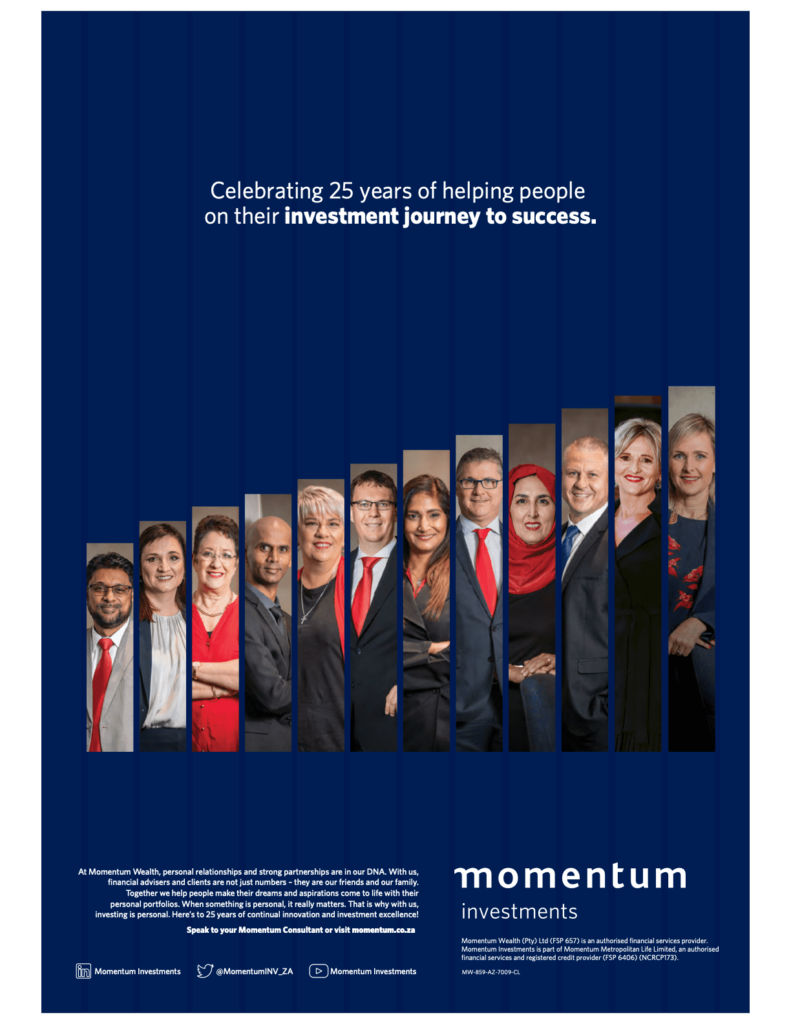Loftie Botha, Portfolio Manager at Momentum Investments
Market cap weighted index funds are widely used in South Africa, but a lesser-heard-of peer, Smart Beta funds, have recently showed impressive asset growth – potentially making this the next fund category to watch.
But what are Smart Beta funds? Smart Beta investing is an investment approach in which decisions are based on objective data, rather than on subjective opinions. Smart Beta portfolio managers rely more on quantitative techniques than on fundamental analysis. A Smart Beta portfolio may follow a single style such as momentum, value or quality, or it may be diversified over a combination of styles, where it would be referred to as a multi-factor portfolio.
A few interesting trends come to the fore if Morningstar figures on the General Equity Unit Trust category are analysed.
- Of the R380.5bn invested assets by the end of June 2021, only R15.2bn was invested in Smart Beta funds.
- The growth trajectory of these funds makes it clear that powerful forces are at play – while the General Equity category grew assets by 11% p.a., the Smart Beta segment grew assets by 31% p.a. in the past decade.
- Its market share expanded from 1.3% to an impressive 4.0%, and the number of funds increased from 5 to 25 over the same period.
Looking at these numbers , the global trend of exponential Smart Beta growth is firmly in place in the local market, albeit from a low base.
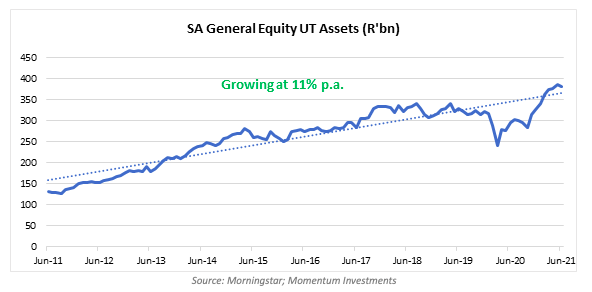
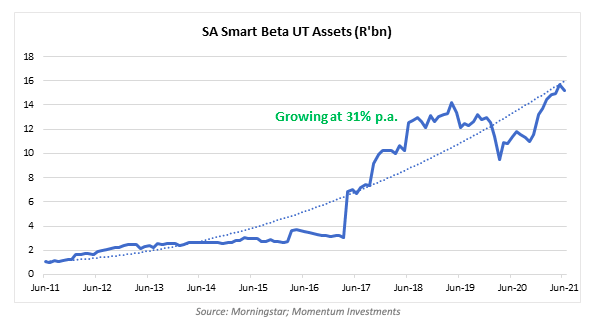
This should not come as a surprise as the main drivers of global Smart Beta growth – return enhancement, risk reduction/diversification and cost savings – are also present in South Africa.
Return enhancement
Of the 179 South African General Equity Unit Trusts that had three-year performance track records as of 30 June 2021, 20 can be considered Smart Beta funds. A simple analysis of the performance quartile dispersion of these funds shows that Smart Beta investors generally received a performance that was either in line with or better than what was delivered by the rest of the funds in the universe.
At the upper end of the spectrum, Smart Beta funds performed in line with other funds in the General Equity category: 25% 1 in 5 delivered top quartile performance. However, 35% delivered second quartile performance, meaning they were over-represented by 10% in this still-appealing quartile. Only 15% of Smart Beta funds delivered bottom quartile performance, meaning they were under-represented by 10% in the least appealing quartile.
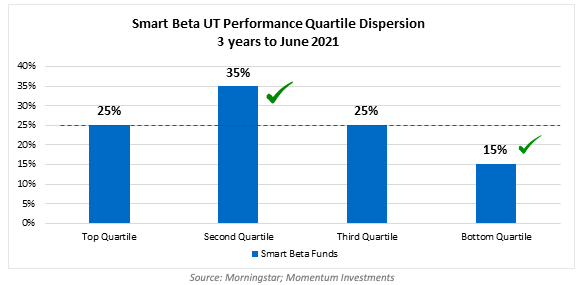
Looking at the five Smart Beta funds that delivered top quartile performance, we see that four are single factor funds and one is a multi factor fund:

Source: Morningstar; Momentum Investments
Risk reduction via diversification
There is a growing consensus that the best way to achieve a targeted investment outcome is not about deciding whether a traditional, Smart Beta or index-tracking approach is superior, but rather about diversifying over multiple product types. This allows the construction of an optimised solution that gives clients exposure to the strengths of each approach, while simultaneously ensuring smoother returns and lower risks via proper diversification. Such a process involves deciding how much Smart Beta exposure should be included in a blended solution, and thereafter deciding which specific Smart Beta funds should be selected.
Because Smart Beta funds don’t have their own unit trust category, the distinction between Smart Beta, tracker and traditional funds is blurred and the classification of a specific fund may admittedly be open for interpretation. However, an analysis of Morningstar data based primarily on fund names suggests that there were 12 multi factor and 12 single factor Smart Beta funds by the end of June 2021. Smart Beta unit trust investors are spoilt for choice.
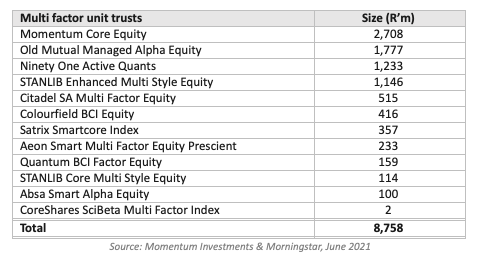
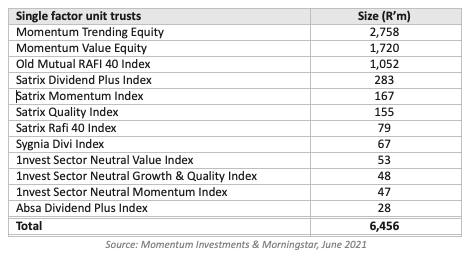
In line with what is happening elsewhere in the world, based on assets under management, investors appear to favour multi-factor funds. However, investors may also invest in single factor (single style) funds, or in a combination of single-factor funds with value, momentum and quality styles on offer. Diversifying across different styles often provides better risk reduction than divesifying over different traditional funds that may follow the same investment approach.

Another distinction between Smart Beta funds is that some follow a process in which a rules-based index is designed upfront, and, from then onwards, the fund is managed as a tracker fund that tracks this index on a continuous basis. Other funds follow a more hands-on approach, making new investment decisions daily, while still ensuring they are in line with the fund’s philosophy.
Cost savings
Smart Beta funds are also value-for-money, based on our analysis. While they are slightly more expensive than cap-weighted tracker funds, they offer the opportunity to deliver superior performance just like traditional funds do – but at a lower fee:

Source: Momentum Investments & Morning Star, June 2021
Domestic outlook
From an asset manager’s perspective, it makes business sense to offer Smart Beta products. While these products offer the same benefits as traditional funds, they can be run at a fraction of the cost because a small number of properly skilled individuals may well deliver the same performance as an expensive fundamental research team.
With more such funds being launched, and as the number of funds with long and superior track records increases, investors will gain comfort. As the investment community increasingly realises that a Smart Beta process does not rely on a black box, but on the disciplined use of the same input data that traditional managers use, their growth trajectory should continue and even accelerate.
Industry players not participating in this space will be missing out.


